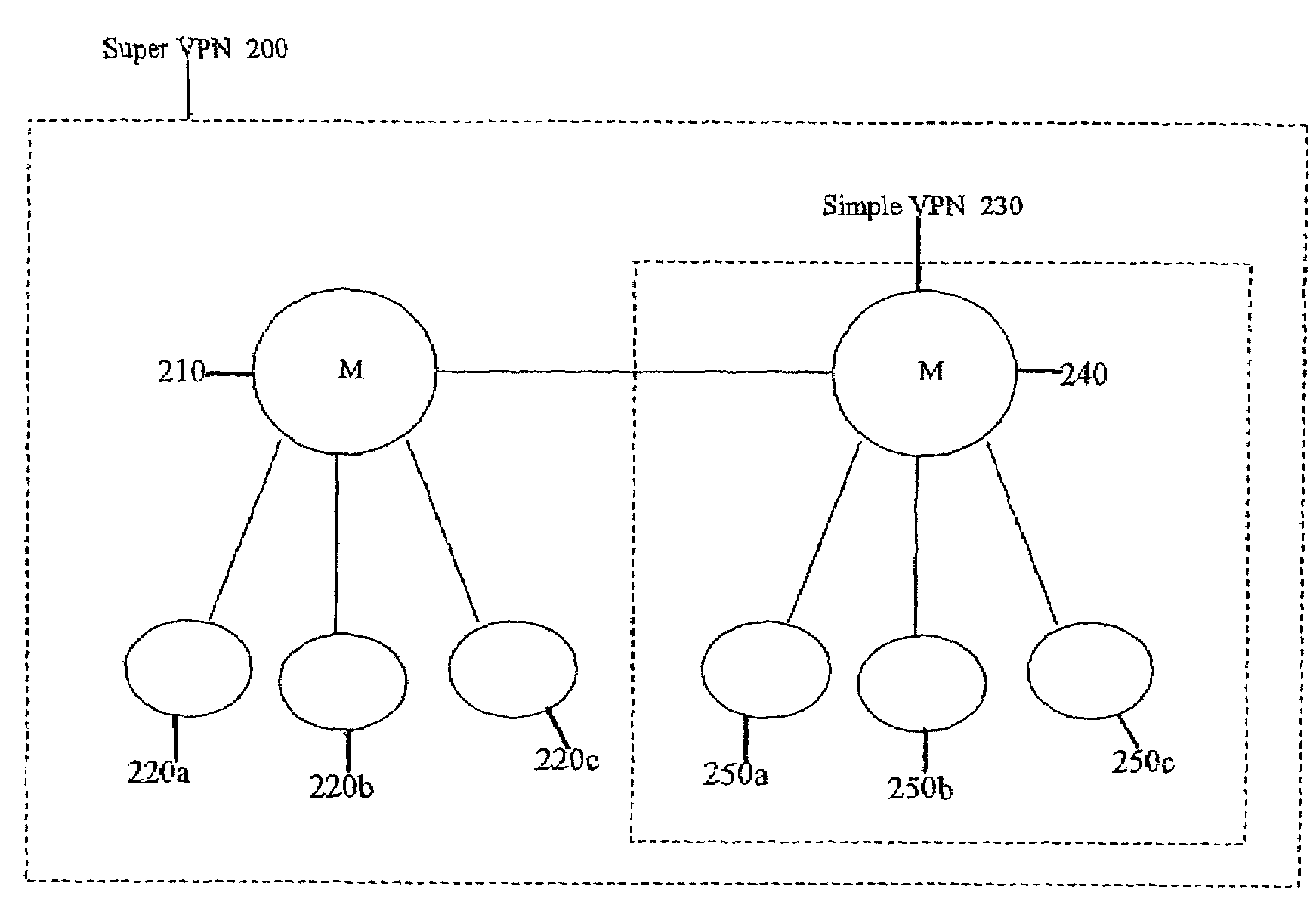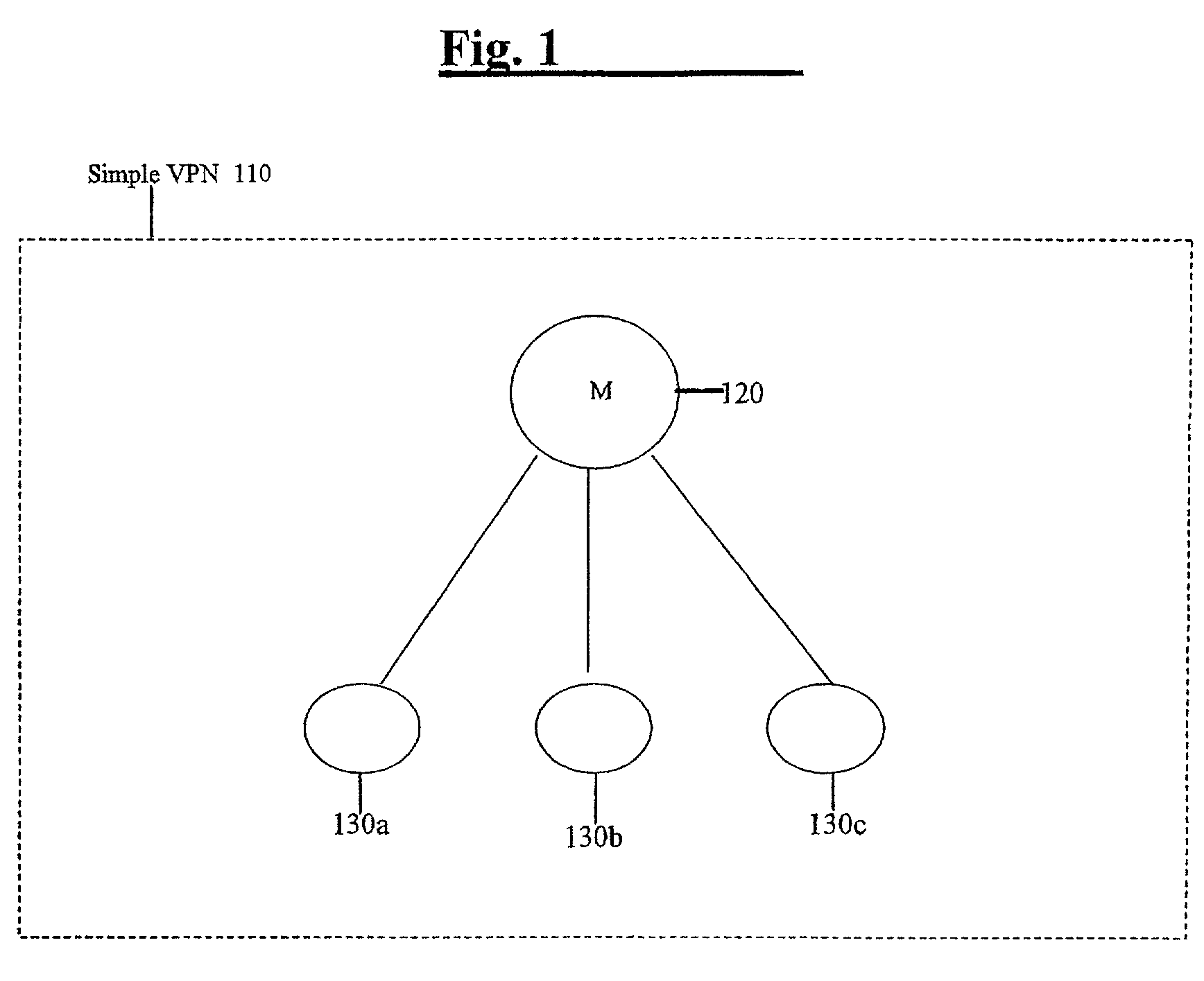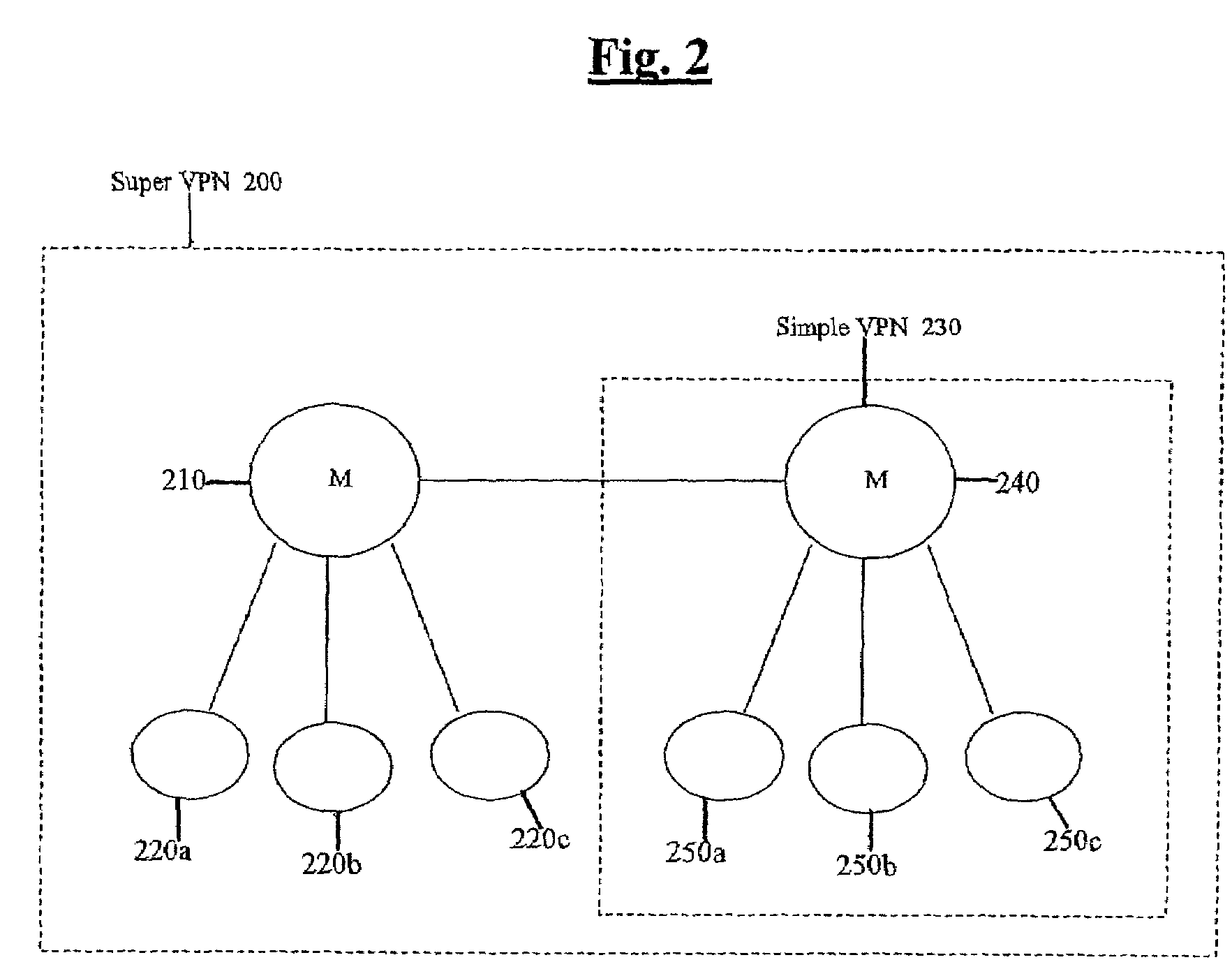Methods and apparatus for scalable, distributed management of virtual private networks
a distributed management and virtual private network technology, applied in the field of secure groupware management, can solve the problems of increasing the complexity of the management burden, and the longer decryption of private group communications, so as to increase improve the reliability and efficiency of vpns, and improve the effect of efficiency
- Summary
- Abstract
- Description
- Claims
- Application Information
AI Technical Summary
Benefits of technology
Problems solved by technology
Method used
Image
Examples
Embodiment Construction
Network Definitions
[0021]A network “node” may be any type of device or collection of devices capable of processing instructions including (but not limited to) a cellular phone, a PDA, an intelligent household appliance, a general-purpose computer, a network server, a multi-processor cluster of computers, and a computer network such as a LAN. Network nodes are considered “interconnected” if there is a path for communication between them including a potential path, regardless of whether that path is direct.
[0022]A “simple-VPN” may be viewed as a collection of nodes that are interconnected in a secure manner. A simple-VPN is typically a communications group - that is, a simple-VPN generally enables every member node to transparently send private communications to other member nodes. A simple-VPN may employ a single encryption domain, i.e. a single encryption key is utilized for communications among all member nodes. The key may change over time, advantageously providing only one key is...
PUM
 Login to View More
Login to View More Abstract
Description
Claims
Application Information
 Login to View More
Login to View More - R&D
- Intellectual Property
- Life Sciences
- Materials
- Tech Scout
- Unparalleled Data Quality
- Higher Quality Content
- 60% Fewer Hallucinations
Browse by: Latest US Patents, China's latest patents, Technical Efficacy Thesaurus, Application Domain, Technology Topic, Popular Technical Reports.
© 2025 PatSnap. All rights reserved.Legal|Privacy policy|Modern Slavery Act Transparency Statement|Sitemap|About US| Contact US: help@patsnap.com



